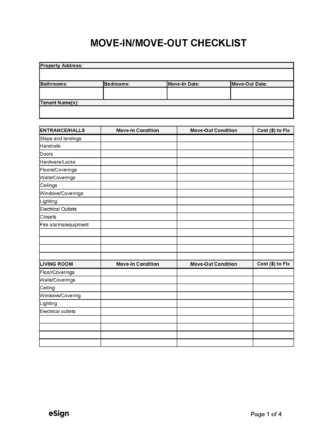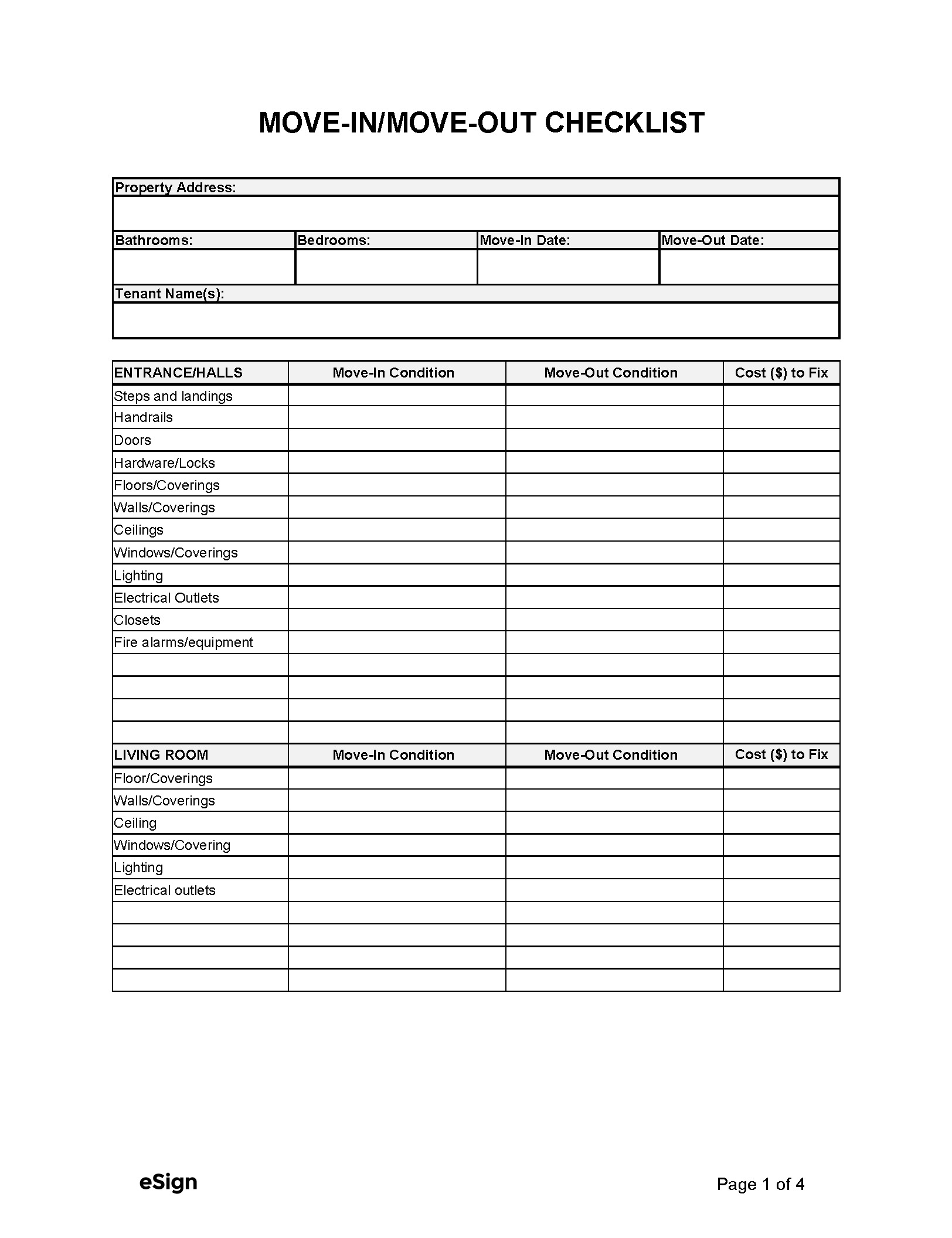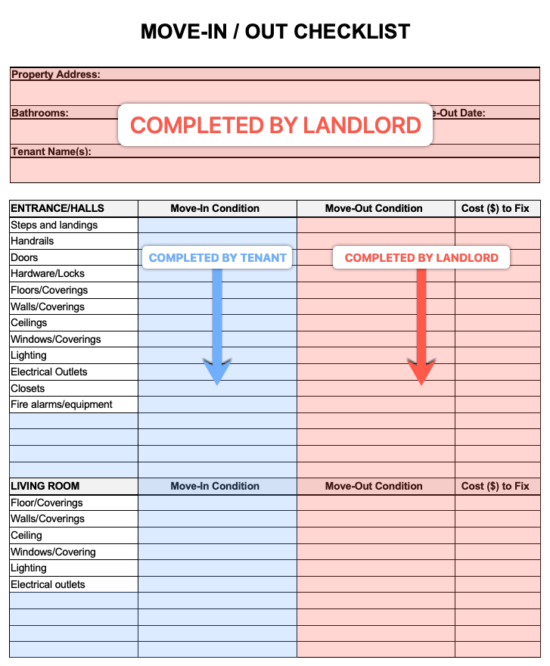
A move-in/move-out checklist is a document filled out at the beginning and end of a lease term to record any prevalent issues or material damage on the premises. Once completed, the form is signed by the tenant and landlord. Sixteen (16) states require the form to be used in some capacity, with roughly half holding it as a requirement only if a security deposit is collected.
A move-in/move-out checklist is a document filled out at the beginning and end of a lease term to record any prevalent issues or material damage on the premises. Once completed, the form is signed by the tenant and landlord. Sixteen (16) states require the form to be used in some capacity, with roughly half holding it as a requirement only if a security deposit is collected.
PDF Download
A move-in/move-out checklist is a document filled out at the beginning and end of a lease term to record any prevalent issues or material damage on the premises. Once completed, the form is signed by the tenant and landlord. Sixteen (16) states require the form to be used in some capacity, with roughly half holding it as a requirement only if a security deposit is collected.
4.6 | 94 Ratings Downloads: 6,689
The checklist contains two (2) main columns; one for when the tenant moves into the property and a second column for recording any new issues when the tenant moves out. The form contains a section for each type of room in the property, which includes the following:
If an area of the form doesn’t apply to the property, it can be left blank. Alternatively, the landlord can edit the form to remove or add sections as needed.
The following are the state statutes for the sixteen (16) states that require a move-in and/or move-out checklist.
(Note: * = only required if a security deposit is collected).
| STATE | STATUTE |
| Arizona | § 33-1321 |
| Georgia* | § 44-7-33 |
| Hawaii | § 521-42 |
| Kansas | § 58-2548 |
| Kentucky* | § 383.580(2) |
| Maryland | § 8-203.1 |
| Massachusetts* | Ch. 186 § 15B(2)(c) |
| Michigan* | § 554.608 |
| Montana* | § 70-25-206 |
| Nevada | § 118A.200 |
| New Hampshire* | § 540-A:6(I)(c) |
| North Dakota | § 47-16-07.2 |
| Utah | § 57-22-4(6) |
| Virginia | § 55.1-1214 |
| Washington* | § 59.18.260 |
| Wisconsin* | § ATCP 134.06(1) |
Note: The word “tenant” references all individuals on the lease.

Prior to giving the tenant the checklist, it’s recommended that the landlord complete the first section found at the top of the page. This will require the landlord to enter the following information:
Using the form as a guide, the tenant will need to go room-by-room until the entire property has been inspected. If a section doesn’t apply, the tenant can leave it blank, cross it out, or write “NA” for “not applicable.”
The tenant should only complete the “Move-in Condition” column. The abbreviations they use to track the condition of each item is up to them (or the landlord), but the recommended terminology is the following:
Any items that aren’t listed in the agreement can be written at the bottom of each category. This can include any furnishings, appliances, decorations, or other items the tenant wants to bring attention to. Once all sections have been completed, the tenant will need to sign their name onto the last page of the form below the “Move-in” title. The tenant will need to send/give the landlord the completed inspection. If the landlord approves of everything listed in the checklist, they will need to sign their name. The landlord will need to retain the checklist until the tenant is ready to move out.
Near the end of the lease, the landlord and tenant (or just the landlord) will go through each item on the checklist to identify the condition it is in. Landlords are not allowed to deduct damage from the security deposit if it can be classified as “normal wear and tear.”
The landlord will need to use the “Cost ($) to Fix” column to record the amount ($) of money it will take to repair each issue. A value should only be written in the column if the line item requires maintenance, repair, or replacement solely due to the tenant’s misuse or carelessness.
Once the landlord has gone through all items in the rental, they will need to sum the values in the cost column and input the result into the “Total Cost to Fix ($)” cell. The landlord will then need to sign their name under the “Move-out” header on the last page. The tenant should be provided with the checklist so they can go through each item to verify its accuracy. This gives the tenant a chance to dispute or clarify any listed damage. If the tenant agrees with the landlord’s inspection, they will need to check the “Agree with move-out inspection” box and sign their name at the bottom of the form.
TIP: If the landlord inspected the premises before the tenant moved out, it is customary for the landlord to give the tenant the option to remedy any issues listed in the inspection. This has two (2) major benefits: 1) it gives the tenant a means of collecting more (or all) of their security deposit, and 2) it saves the landlord the time and energy it would take for them to resolve the issues themselves.
Once the tenant has fixed all of the issues with the property OR accepted the amount ($) that will be deducted, the landlord will need to send them their security deposit. The majority of states require deposits to be returned to tenants within a specific timeframe, often within thirty (30) days.